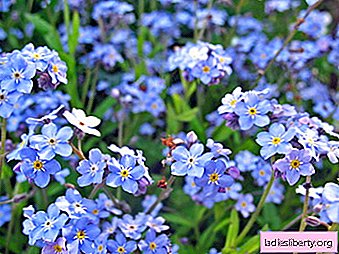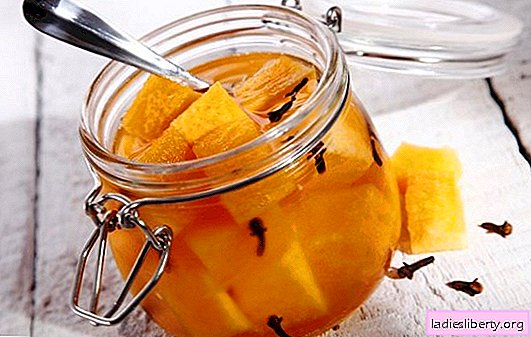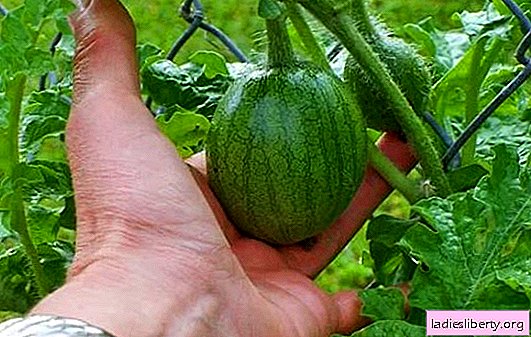
The genus Forget-me-not (Myosotis) from the Boraginaceae family is represented by approximately 50 plant species whose habitat is Europe, Asia, America, South Africa, Australia, and New Zealand.
Flower forget-me-not is a low plant with a highly branched stem, oval pointed leaves and racemose inflorescences with blue, blue, less often - white, pink and lilac flowers with a yellow center. In ornamental horticulture, the most used are Alpine forget-me-not (Myosotis alpestris), Swamp forget-me-not (Myosotis palustris), Alpine forget-me-not (Myosotis x hybrida hort), forget-me-not flower (Myosotis dissitiflora), forest forget-me-not (Caosos myososos) Myosotis.
In Russia, the forget-me-not is also called the gourd, the febrile grass, the handful. It is interesting that different peoples have their own legends about this flower, but each of them is based on a story associated with fidelity and good memory. One of them tells how a couple in love strolled along the river, and suddenly the girl admired the lovely blue flower growing on the very edge of the steep bank. The young man decided to rip it off, fell off a cliff and fell into the river. Carried away by a strong current, he managed to shout to his beloved: “Do not forget me!” And went headlong under the water. When his body was found, a blue flower was held in his hand, which the girl planted on the grave of her beloved. And there are many such stories about the name of this amazing flower.
Forget-me-not flowering begins in May and lasts about two months. Most successfully in appearance, this flower is adjacent to a flower bed with pansies and a bright yellow wallflower. Also, its cold resistance and early flowering make it possible to use it in spring compositions with bulbous plants.
Forget-me-nots - growing and caring
For forget-me-nots, it is better to choose semi-shady places with humus, light soils. These areas should be well and regularly moistened, because forget-me-nots, based on their natural origin, are hygrophilous plants, and when not moist enough, they quickly fade. Therefore, in drought, they should be watered abundantly. However, waterlogging of forget-me-nots can cause them to rot or stalks to stretch excessively, therefore, it is necessary to provide good drainage in the area where they are grown.
These plants respond very well to the introduction of organic and mineral fertilizing. It is necessary to fertilize the soil with ammonium nitrate (10 g. Per 1 sq. M.), 15 g of superphosphate (15 g.), Potassium salt (5 g.). Also, for feeding, you can use mullein infusion (1 part per bucket of water) and a mixture of compost with peat.
Since forget-me-nots are planted in the shade and make plantings quite dense, weeding them is not necessary.
Forget-me-not - transplantation and reproduction
Forget-me-nots tolerate transplantation at any time of the year, including the period of their flowering. They are propagated mainly by seeds, which are sown from late May to early July, and planted in a constant place in August-September. It is important to know that when sowing seeds should not be deeply buried so that they can germinate faster in the light. Before sowing, they should be lowered into slightly salted water. Seeds that pop up are discarded. The rest should be dried and sown on the moistened surface of the soil. After 5-6 days, seedlings will appear, and after the formation of one or two true leaves, they should be dived into boxes or in pots filled with moist peat soil. First, the box is kept in a cold greenhouse, and since March - in a warm room. For the good development of seedlings, they should be provided with constant hydration, but they do not need additional lighting, since forget-me-nots are shade-tolerant plants. Since late April, young plants can be planted in flower beds. The distance between them should be from 15 cm to 20 cm. Flowering occurs in May-June of the year following the planting.
Forget-me-not seeds are characterized by early ripening, so they quickly crumble. This leads to the fact that in autumn under the mother bushes you can see young plants sprouted from fallen seeds, suitable for transplanting to another place. Also, after collecting the seeds, they can be sown in small grooves, spaced 10 cm apart, sprinkled with fine sheet soil on top, watered and priced. After about 2 weeks, seedlings will appear. After the formation of these leaves, they should be planted 5-10 cm from each other, and in August-September, planted in a permanent place.
Also, for propagation of forget-me-nots, you can use green cuttings. Grassy apical cuttings having a length of 4 to 5 cm are planted in shaded places in May-June. Early cuttings allow you to achieve flowering forget-me-nots in the same summer or autumn, but in this case they will bloom worse next year. Later cuttings will lead to the appearance of a small bush in the fall, but next year the plant will bloom profusely and for a long time.
Forget-me-nots - diseases and pests
In order for the forget-me-nots to not hurt, you need to follow the simplest rules for caring for them: avoid planting, regularly loosen the soil and observe the optimal irrigation regime, not allowing the plant to dry, but also not watering it excessively. In violation of these rules, plants can be affected by various diseases.
The main diseases of forget-me-nots are gray and root rot, real and downy mildew. The best remedy for rot is to spray the plant with the Hom drug 10 days after it sprouts (40 grams of the drug is taken per 10 liters of water). Powdery mildew is also treated by spraying with fungicides, for example, the drug "Skor" (2 ml diluted in 10 liters of water).
Forget-me-nots can also suffer from aphids, cruciferous fleas, scoops and slugs. The main control measure is spraying with insecticides.











